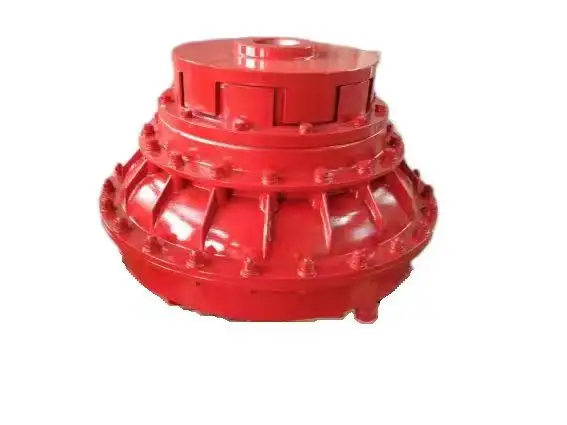Product Description
PRODUCT DETAILS
Plastic Flexible pipe couplings -Straight Reducers /Reducing Connectors
PRODUCT INFORMATION
| Name | Plastic Flexible pipe couplings -Straight Reducers /Reducing Connectors | |
| Material Type | TPE | |
| Temperature range | -40 – 80°C | |
| Certificates | ROHS, REACH | |
| Advantages | Leakproof and resistant to chemicals, ultraviolet rays, fungus growth and normal sewer gases | |
| Stainless Steel Clamps | Stainless Steel Clamps | |
| Advantages:Corrosion-resistant and rustproof | ||
WHY CHOOSE US
· ISO9001:2008 authorized, Certifications of ROHS, SGS, WRAS, FDA21 are available.
· 20 years production and 10years export experience
· Independent R&D center of rubber formulation, independent product and tooling design center
· With over 1000 ton machine, biggest 1000kg product can be produced
· Reasonable and competitive price
· Thousands of tooling available, especially standard sizes. For large quantity of customized product, the mold fee is free
COMPANY INFORMATION
FACTORY SHOW
EQUIPMENTS
CERTIFICATIONS
ADVANTAGES
CONTACT US
RELATED PRODUCTS
/* January 22, 2571 19:08:37 */!function(){function s(e,r){var a,o={};try{e&&e.split(“,”).forEach(function(e,t){e&&(a=e.match(/(.*?):(.*)$/))&&1

Protection Against Leaks and Contamination in Oil Couplings
Oil couplings are designed with various features and practices to prevent leaks and contamination, ensuring their reliable operation:
- Sealing Mechanisms: High-quality seals and gaskets are used at critical points to prevent oil leakage and entry of contaminants.
- Seal Maintenance: Regular inspection and replacement of seals and gaskets help maintain their integrity and prevent leaks.
- Enclosures: Some oil couplings are housed within protective enclosures that shield them from external debris, dust, and moisture.
- Oil Filtration: Some systems incorporate oil filtration units to remove contaminants and particles from the oil before it enters the coupling.
- Oil Analysis: Regular oil analysis helps monitor the condition of the lubricant and detect contaminants or degradation early.
- Proper Installation: Precise installation and alignment reduce the risk of seal damage and misalignment-related leaks.
- Clean Environment: Maintaining a clean operating environment minimizes the likelihood of contaminants entering the coupling.
- Oil Reservoir Design: Well-designed reservoirs and chambers within the coupling can prevent oil from escaping and contaminants from entering.
- Seal Design: Advanced seal designs with protective features can provide enhanced resistance to leaks and contamination.
Through these protective measures, oil couplings can effectively safeguard against leaks and contamination, ensuring their continued performance and reliability.

Industry Standards and Guidelines for Oil Couplings
While there are no specific industry standards or guidelines exclusively dedicated to oil couplings, their design and usage often fall within broader standards related to mechanical power transmission components. Some relevant standards include:
- ISO Standards: International Organization for Standardization (ISO) standards, such as ISO 9001 for quality management systems and ISO 14691 for industrial fans, provide general guidelines that may apply to oil coupling manufacturers.
- AGMA Standards: The American Gear Manufacturers Association (AGMA) produces standards related to various types of mechanical power transmission equipment, which could encompass aspects of oil coupling design and manufacturing.
- API Standards: The American Petroleum Institute (API) develops standards for equipment used in the oil and gas industry, which may include guidelines for components like oil couplings.
Additionally, manufacturers and users of oil couplings should follow best practices, engineering principles, and guidelines for lubrication and maintenance to ensure optimal performance and longevity of the coupling.

Challenges from Improper Oil Coupling Maintenance and Avoidance
Improper maintenance of oil couplings can lead to various challenges that affect performance, efficiency, and the overall lifespan of the machinery. Here’s how to avoid these challenges:
Oil Contamination: If contaminants like dirt, water, or foreign particles enter the oil, it can compromise the lubrication and cause excessive wear. Regularly inspect and change the oil according to manufacturer recommendations to prevent contamination.
Insufficient Lubrication: Inadequate oil levels or improper oil viscosity can lead to insufficient lubrication. Monitor oil levels and choose the right oil viscosity as per manufacturer guidelines to ensure proper lubrication.
Overheating: Operating an oil coupling at high temperatures without proper cooling mechanisms can cause the oil to break down, leading to reduced lubrication properties and potential damage. Implement cooling systems if necessary and monitor operating temperatures closely.
Oil Degradation: Over time, oil can degrade due to oxidation, thermal stress, and chemical reactions. Regularly check oil condition and replace it if signs of degradation are detected. Scheduled oil analysis can help predict oil degradation and replacement times.
Incorrect Oil Selection: Using the wrong type of oil with improper viscosity and properties can affect coupling performance. Always refer to manufacturer guidelines and recommendations for selecting the right oil for your specific coupling.
Infrequent Inspections: Lack of regular inspections can result in undetected issues, leading to potential failures. Implement a regular inspection schedule to identify any signs of wear, leaks, or other problems early on.
Ignoring Manufacturer Recommendations: Manufacturers often provide maintenance guidelines for their specific oil couplings. Ignoring these recommendations can lead to suboptimal performance and premature wear. Always follow the manufacturer’s maintenance instructions and recommended intervals.
Improper Installation: Incorrect installation can lead to misalignment, poor engagement, and premature wear. Follow proper installation procedures and ensure accurate alignment to prevent these issues.
Lack of Training: Inadequate operator training can result in improper oil coupling maintenance. Provide proper training to operators and maintenance personnel to ensure they understand the coupling’s requirements and maintenance procedures.
By addressing these challenges through regular maintenance, following manufacturer guidelines, and implementing best practices, you can ensure the optimal performance and longevity of your oil couplings and the machinery they are a part of.


editor by CX 2024-04-24
Leave a Reply